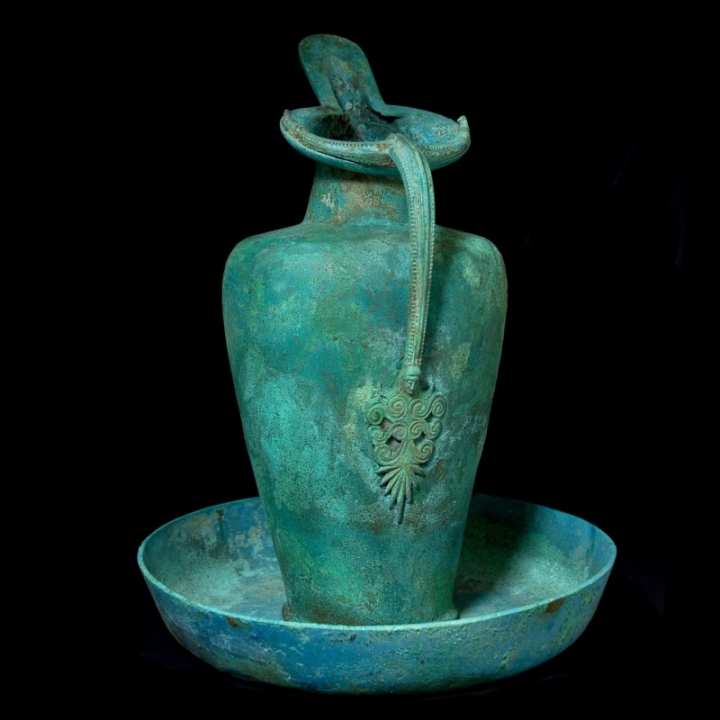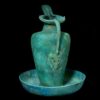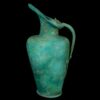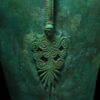Etruscan Beak-Spouted Flagon (“Schnabelkanne”) with a Bronze Basin
Culture: Etruscan
Period: End of 6th to beginning of 5th century B.C.
Material: Bronze
Dimensions: 35 cm high; 27.7 cm in diameter (basin)
Price: Sold
Ref: 4107
Provenance: French private collection M., Dijon, acquired prior to 9 July 1982. Comes with an inventory list from July 1982 mentioning the "Schnabelkanne". Accompanied by a French antiquities passport.
Condition: Inside of the corpus some stabilization, possibly some small closed parts in the walling, otherwise intact. Basin is intact.
Description: Bronze cast Schnabelkanne with a flat base and a broadening corpus towards the top with a horizontal shoulder. The neck with a cylindrical sharply angled estuary and a high reaching beak-shaped spout. On the spout’s rim two hatched handle arms, on each terminal a lying, stylized animal. The riveted handle ends in a magnificent escutcheon depicting a Siren. The Siren with an archaic face and long hair, wavy on the sides of the head, below volutes and a leaf. The Schnabelkanne with a possibly belonging bronze basin. See for type reference the Schnabelkanne from Mining-Sunzing in the Upper Austrian Landesmuseum, inventory number A-2330. Schnabelkannen represent excellent examples of the Etruscan bronze industry. They were produced at the end of the 6th century and during the 5th century B.C. in the Etruscan main region in the northern part of central Italy and were exported over the Alps to east of France and to the central Rhine region. This wide distribution impressively proves the extensive trade connections during the Iron Age.






